Genre: Run-‘n-Gun Developer: ZAP Corporation Publisher: Toyo Recording Players: 1 Released: 1992
Of all the genres that crawled their way out of the arcades as we grew up and settled into reasonable lives, shooters have turned out to be the most prolific. From Robotron to Cuphead, from machine-gun machismo to flying bodybuilders and cutesy laser-wielding penguins, the formula has been reinterpreted many times. At its core, though, it has remained consistent and consistently enjoyable, with names such as Irem, Treasure, and Compile, to name a few, as genre stalwarts. So, with a handful of lesser titles to their name, and another handful uncredited or wrongly ascribed to them, ZAP Corporation is a somewhat obscure studio, and a strange one to bring up on the subject of shooters. After all, their more recognizable games, colorful but bland shmups on the PC Engine, enticed players even less than NEC’s platform outside Japan. But the truth is that, despite their anemic track record, ZAP succeeded in creating a great run-‘n-gun on the Genesis.
Twinkle Tale thrusts players into the fantasy world of Alpherion the robe and wizard hat of Saria, a young apprentice magician. The fantasy yarn is spun early on, revealing that the wizard Gadou plans to resurrect the demonic king of darkness, and it’s up to Saria to save the wizards responsible for guarding the magical gemstones that would enable such a catastrophe. So far, so Cotton – or close enough. Twinkle Tale doesn’t thrive on an outlandish setting or jokey characters and plots and is instead content with parading stock fantasy creatures and tropes without the same flair as Success’ series but giving them just enough aplomb to be recognizable.
Yet, there is a certain enthusiasm at play here, an almost theatrical verve to the stages. Unassuming plains lead to mad dashes across falling boulders and angry golems, while underground torchlit mazes give way to fiery ruins. Elsewhere, boulders roll across castle walkways, behemoths stampede across crystal palaces, tongues of fire and arrows leap from wall statues, and enemy forces occupy a large mountain range – the latter a standout in the game’s nine stages, and the only one to formally recognize the studio’s background, with Saria taking to the air on her broomstick. Stages also have some minor exploration elements sprinkled onto them via optional rooms and branching paths. The former is a precious “why not?” slice of design, leading the inquisitive player to find additional challenges and power-ups, but the latter proves to be a fickle divertissement, as all paths lead down the same objective and provide only superficial differences. But look beyond the flourishes to find that Twinkle Tale follows the genre’s maxim of “go out there and kill things” quite unrepentantly, with the level of attrition consistently high.
As far as pacing goes, the game finds its own rhythm halfway between the looseness of earlier Contra games and the precision of shmups right before they jumped onto the manic ship, with the scrolling following along Saria’s footsteps. It wastes no time reveling in its fast-flowing stream of enemies. Of course, Saria isn’t helpless. From the onset, she’s given three magical weapons: Shooting Star, a basic spread shot that barters power for a wider angle; Diamond Arrow, a powerful set of beams that travel forward; and Silver Comet, a weak but ever-convenient homing attack. Each of these can grow in power, to a maximum of three levels, by collecting star power-ups along the stages. Should a star be collected while a maxed-out weapon is selected, the effect is then transferred to another weapon. Conversely, getting hit will rob Saria’s currently selected weapon of one power level. The loss of weapon effectiveness provides an interesting balancing act, requiring good timing to dodge blows or a well-timed and well-judged, sacrifice of another weapon’s level.
Bereft of defensive maneuvers or even a dodge mechanic similar to the one found on then-contemporary Pocky & Rocky (Natsume’s effervescent Super Nintendo sequel to the monotonous arcade original), avoiding gargoyle swoops, giant stomps, and burning pentagrams comes down to managing Saria’s energetic movement and her weapons. Twinkle Tale makes the peculiar decision of giving Saria free movement and aiming during the bulk of her adventure but locking her into a forward-facing position during boss fights. While the change is welcome to counter the superior challenge at the end of a stage, it nonetheless feels like an option to switch between shooting modes wouldn’t be out of place. As it stands, the homing attack becomes the fallback weapon for the better part of the game, leaving players free to focus on evasion because, unlike the other two weapons, it doesn’t require Saria to be facing enemies. Though ultimately, this might not be an issue for some players. Challenging as it may be at times (and the harder difficulty settings boost enemy hit points and attack speed), it’s a fair game and even goes the extra mile of player friendliness. Saria can make use of smart bombs (an energy sphere with modest homing abilities and a frontal, three-pronged fire dragon attack), and during crucial plot points, Saria is rewarded with an additional health unit. Further, higher scores bring extra continues with them.
After Barunba’s identity crisis and Dead Moon’s schlocky sci-fi, it’s hard to imagine ZAP would offer up such a striking game. Was it newfound imagination, commercial hunger, or a clearer but late understanding of the genre? Whatever it was, it infused all the game’s stages and its core play mechanics with the right amount of detail and urgency. Unfortunate then, that the studio’s ambition manifests unevenly across the entire experience.
Distinctive as the stages’ themes are, Twinkle Tale struggles with legibility, trying to balance pixel dithering with a cleaner style. Scenes such as the moment Saria arrives at the Diamond Palace or even Alpherion’s world map are bright, chunky pieces of pixel work, whereas more nature-based sections, as well as some enemies and their attacks, are rougher and messier. The choice of colors is also questionable at times, muddying what should have looked sprightly. And while technically accomplished for the most part, it’s prone to some jerky scrolling, flickering and slowdowns – strangely, even when the screen is all but derelict.
Other issues intrude upon the game’s design. Enemy variety soon turns to over-familiarity, with most foes going for the time-blunted tradition of palette swaps in lieu of more engaging behavior, and some of them bleed in a bit too much against the scenarios. Even the more unexpected moments turn rote in the long run. The gift of life is breathed too often onto statuary, once-imposing golems are repurposed several times, and a wooden guardian that nicely complemented a greenwood forest is found once again, of all places, on an elevator ride in the final area. While it’s a delight to fight through the opposition, it’s a shame to see it exhausted so quickly. There’s nothing wrong with modesty in design, but a little indulgence can go a long way, as shown by the game’s bosses. Whether it’s a giant, web-slinging, fire-breathing spider; a large, laser-spewing tree; or the dragon-riding knight who leaves the murdering to his winged pet when he’s vanquished, they’re almost always impressive, both in tactics and scale.
While sound effects are largely competent, several feel tiny and drowned out by the action, although as expected of a fast-paced run-‘n-gun, players might be too busy to note or care. The music, on the other hand, fits the overall mood. It never goes for bombast and snuggles with the action instead, teasing out catchy pieces and effective beats out of the hardware. it feels too restrained though, and not as inventive as it could have been. As a soundtrack to give sub-Tolkienesque fare their comeuppance through colorful, magical fire, it works, but hardly anyone will be humming these tunes once they turn off the game. Finally, while the homebrew community has improved the game with an English translation and a much welcome color revision, 16-bit fans with a sweet tooth for imports will have to contend with the original’s language barrier and occasionally unflattering palette.
Suffice to say, there’s nothing quite like Twinkle Tale on the Genesis. Undead Line comes close but is less vibrant and more sadistic, and Arcus Odyssey is too committed to its nothingness to be compelling. Elemental Master misses several beats, and thematic differences aside, Chaos Engine is still in a league of its own. ZAP’s greatest achievement might be that the game never becomes a well-meaning failure, stranded on the shores of good intention. On the contrary, it’s a best-of rather than an almost-there and shines bright enough on the shooter firmament. Twinkle Tale deserves nothing less, but hardly more because while it has an unmistakable heart, sometimes the pulse is hard to find.
SCORE: 8 out of 10

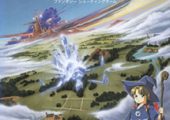
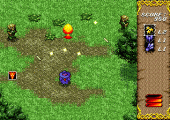
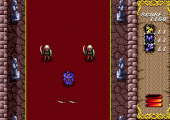
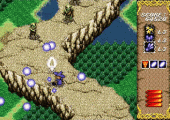
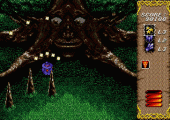
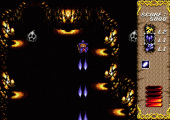
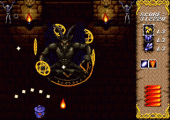
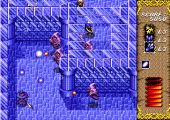
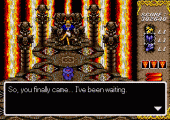
Recent Comments